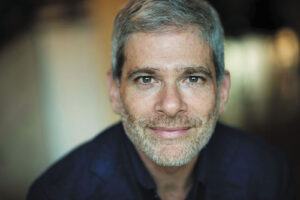Skin so red it feels like I’m broiling from the inside out. Itching so much I’m going crazy. No moisture anywhere in my body. It hurts to move, to lie down, to breathe. These are common symptoms of someone with cutaneous T-cell lymphoma, or CTCL.
CTCL is a very rare disease; most doctors never see a case during their years of medical practice. For this reason, CTCL is hard to diagnose. The disease doesn’t have a genetic component and hits people out of the blue, more women than men, usually when they’re in their 40s.
Cutaneous (meaning: relating to the skin) lymphomas are types of non-Hodgkin lymphomas which originate in the lymphocytes (white blood cells). The disease is divided into two general categories: CTCL accounts for approximately 80 percent of cutaneous lymphomas; the remaining cases are Sézary syndrome, in which large areas of the skin have very dry, red, scaly, and/ or blistered patches and itching is very intense.
In 1997, I was a new immigrant to Israel who didn’t speak the language or know local customs. When my body broke out in a rash, my hair started falling out in clumps, and I started to feel sick. I knew I needed to see a specialist, but it was hard for my symptoms to be taken seriously. I made an appointment with the head dermatologist at Hadassah Medical Center in Jerusalem, but he insisted that it was nothing, just a bad rash.
This was my life for more than two long years as I struggled to find the right diagnosis. Because CTCL is so rare, doctors don’t recognize the symptoms. I had to practically beg mine to perform a biopsy, or at least consult with other doctors from major medical centers, but he refused.
So I soldiered on, avoiding the sun as much as possible, slathering my body with creams, trying to work and live as normally as possible. Yet there were a few nights I felt so ill I thought I might die. At times, my condition became so unlivable I wrote a note for someone to find in case of my death.
As the internet was in its infancy (I didn’t have a computer and smartphones didn’t yet exist), I went to the library at the The American Center in Jerusalem to see if there was a hospital in America where I might find a doctor to help me. I told a librarian what I was looking for, and he showed me some medical journals. In one, I found the name of a CTCL specialist at the Dana-Farber Cancer Institute. I took a leave of absence from work and flew overseas. They took biopsies of several lesions on my skin, and a week later, I had a diagnosis.
I returned to Israel and entered a new life as a cancer patient. When I received my diagnosis, I thought that I would never get married or have children. Less than a year after my trip to Dana-Farber, I met someone. I explained that CTCL was a chronic illness, like diabetes, and most people don’t die from it.
My daughter was born two years after we married. Due to my pregnancy hormones, my skin got worse. By the time my daughter was 16 months old, I could barely function. Luckily, in the small town near Jerusalem where we lived, there was a dermatologist who knew about my disease and had seen patients with it. We tried to avoid chemotherapy since it could affect my fertility, yet there was no choice, so I started weekly injections of methotrexate.
But it was nice to know there were other options. Symptoms of CTCL can be relieved with steroid creams and phototherapy. Many patients use a chemotherapeutic topical cream containing mechlorethamine, but this is difficult to use because one has to be careful to apply this medication only to the affected area, avoid touching one’s face or eyes after application, and wash hands thoroughly so that others won’t come into contact with this toxic ointment.
Approximately 1,500 to 2,000 people are diagnosed with CTCL every year, yet this figure is hard to obtain, because it can take months, even years, to receive a definitive diagnosis.
A year after I stopped the chemo injections, I got pregnant. Although my skin reddened, it was manageable. I nursed my son for a year, did chemo for another two months, and since then, I’ve lived normally, yet with safeguards. My skin can have a severe reaction to intense heat or strong sunlight, so from April to November, I’m very careful not to walk in the heat of the day.
Luckily for my children, CTCL does not have a genetic component, but there is cause for concern due to heritage. African Americans as well as people of Ashkenazic- Jewish descent are more prone to developing CTCL (Mr. T., a well-known television star from the 1980s, has CTCL and acknowledged it publicly).
Approximately 1,500 to 2,000 people are diagnosed with CTCL every year, yet this figure is hard to obtain, because it can take months, even years, to receive a definitive diagnosis. Someone like me, for example, bothered by dry patches for an extended period of time might try every cream on the market for years, their symptoms never abating.
A diagnosis is crucial; most likely someone with “eczema” will be prescribed steroid creams and told to keep slathering on moisture, treating only the symptoms which appear on the skin. With CTCL or Sézary syndrome, patients can begin treatments which treat the blood. When treated internally, there is more hope that the redness, itchiness, and pain might abate.
When my children were young, I sometimes would forego summer activities. People made unhelpful comments like, “But there’s shade,” but that didn’t help when the shady areas weren’t cool. Luckily, there were fun, indoor activities like the local library with children’s programming.
Reflecting on this blurry, frenzied period of motherhood, I think of the times I wasn’t totally present with my daughter. I wasn’t able to relax and enjoy my two pregnancies, and when Meira, my daughter, was a baby, I couldn’t fully enjoy playing with her due to the pain. Yet now we’re very close. We recommend books to each other, snuggle on the couch at night and talk about our days, and cook together. She is a high school sophomore, and my son Naphtali is 12.
I’ve been off chemo for 11 years. At age 51, I can reflect on what cancer took from me: It prevented me from developing a career because I was too sick for years to work. But now, I’m looking into graduate programs in several areas that interest me. I’m definitely scared about our finances, yet all I can do is activate the reset button on my life.
My focus has shifted on others with chronic illnesses. If you know someone who is chronically ill, listen and try to be sympathetic— it’s so hard to be fatigued and in pain the entire day. If a friend says she can’t participate in an activity, don’t dismiss her concerns. Instead, ask how she can be accommodated. And if you are the one suffering from a rare ailment but struggling to find a diagnosis, keep pushing for the answers.
Developing cancer at age 30 was certainly not a goal. This is life—it happens while you make other plans. I have to push myself daily to be proactive and hope for a bright—yet not bright red—future
Lauren Adilev, who lives near Jerusalem, runs Turn Write This Way, a boutique content agency. A solo mom of a daughter and son, she writes and edits memoirs







